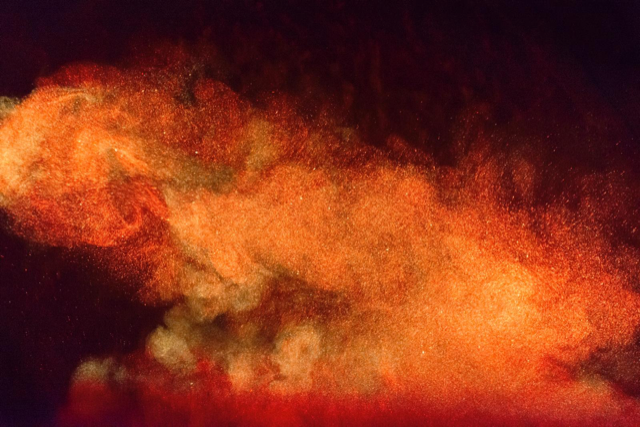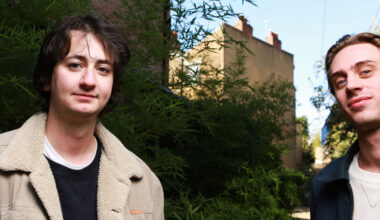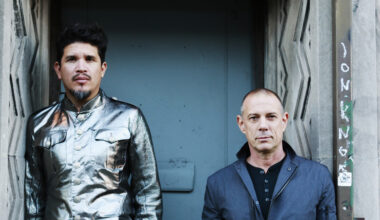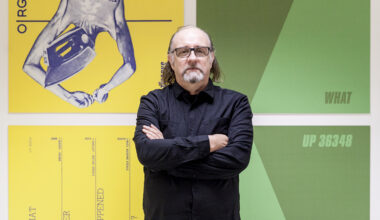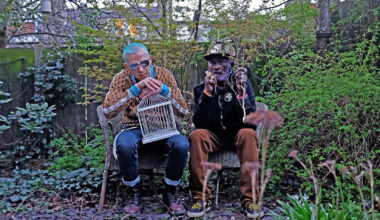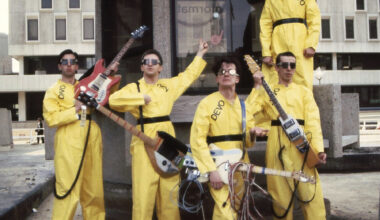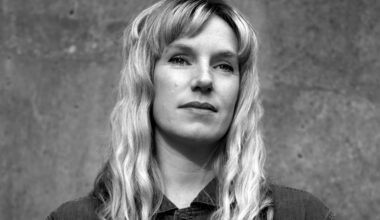Going down to the woods and big surprises is music to the ears of producer and sonic artist Nicolás Jaar. His audio-visual residency in the Shock Forest went down a bomb, so to speak
In Zaandam, an area north of Amsterdam separated from the city by the North Sea Canal, is a place known as the Shock Forest. The woodland is so named because it was specifically built to be bombed.
The forest is part of the Hembrug military site that was originally established in the late 1800s by the Dutch company Artillery Establishments. For half a century it was routinely pummelled by the blasts of ammunition tests. For years, the trees muffled the sound of explosives and shielded the military activity from civilian view.
We know all of this because it’s just some of the history that the Chilean-American musician and composer Nicolás Jaar has explored as part of an intense research project undertaken during his four-month residency at Het HEM, a former firearms factory adjacent to the forest site, which now operates as an arts centre.
Jaar and his Shock Forest Group – a young, international team of researchers put together by Jaar specifically for the residency – were also moved by the plight of the herons that once flocked to the area.
Their population grew to the largest in Europe during the 1960s. In 1967, there were thought to be up to 453 pairs of herons there. Only a decade later, their numbers had drastically decreased. Symbolically, the heron represents stillness and tranquillity. This symbolism is not lost on Nicolás Jaar. When the herons occupied the forest, the military men couldn’t enter the woods without an umbrella because their uniforms would become soiled with bird droppings. “Poetic justice” as Jaar calls it.
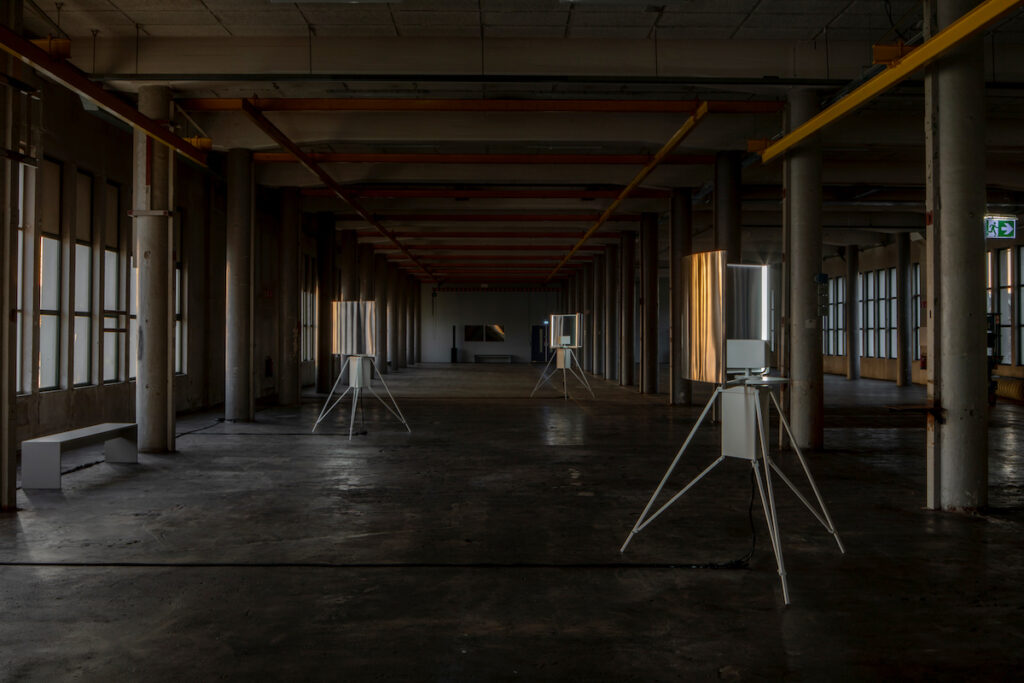
A prodigious talent, Jaar has been a constant, if left field, presence on the electronic music scene since his breakout debut LP ‘Space Is Only Noise’ was released in 2011 when he was just 21. His practice has always been diverse and he has never fitted the traditional mould of a dance music producer. His career has spanned solo releases and film scores, live sets, an edits-focused musical alias (Against All Logic), and his own Other People label.
While he’s best known for his emotive, minimal-leaning music (from prog-dance project Darkside with guitarist Dave Harrington, to his electro-political 2016 album ‘Sirens’) he has also been making experimental sound pieces for years.
In 2012, there was his five-hour improvisational piece ‘From Scratch’ at New York’s Museum Of Modern Art. More recently, he has performed live experimental works at the Sharjah Architecture Triennial in the United Arab Emirates and at the Sarab 2019 Festival in Wadi Rum, Jordan. At the latter, he was performing as the duo ¡miércoles! with dancer Stéphanie Janaina, where he sat on the ground in the desert and live-looped the sounds in the sand.
Jaar was invited to Amsterdam to curate the second “chapter” of Het HEM’s temporary exhibition programme. Het HEM is an edifice that has, as with many large industrial sites with complex histories, been reborn in the 21st century as a cultural space. It opened last year and has already been dubbed “the Tate on the Canal”. As well as art galleries, Het HEM is home to studios, office spaces, a market hall, a museum and various restaurants and cafés spread across the 105-acre plot.
When Jaar accepted the invitation, he was determined that his project should fully explore the background of the location. As he puts it during one conversation over the course of our weekend there, with an intensity that characterises the focus of his work, “There’s no such thing as a fucking blank canvas”.
So we find ourselves with Jaar, on a quiet Friday evening on the last weekend of his residency, to explore the sound and light installations he has created.
Deep below the building, in a 200-metre long former shooting range, we encounter ‘Incomprehensible Sun’. “Are you afraid of the dark?” he asks at the top of the staircase that leads to the subterranean bunker below. What may seem like a strange question makes perfect sense after passing through a curtained gap and fumbling tentatively into a pitch-black tunnel.
Inside, beams of light intermittently illuminate the clouds of dust – fragments of ammunition, skin cells, minerals, textile fibres and other materials that have inhabited the tunnel’s past – that are sent spiralling by visitors’ footsteps, creating exquisite, swirling patterns that beg to be tickled by curious fingers. Haunting snippets of sound envelop the void. The light suddenly vanishes, and rapid-fire crackles and bangs erupt like artillery in the night. The only way to orientate yourself within the gloom is to grope blindly towards the concrete walls.
It’s a sensory overload, both beautiful and unsettling, and emerging back into the light of the gallery is like collapsing, wobbly-kneed and relieved, after a roller-coaster ride. It’s only then that you notice the text painted on the wall, a quote from the French writer Georges Bataille, placed there by Jaar, that reads: “I won’t speak of war, but of mystical experience… but how even for a moment can I dismiss this non-knowledge, a feeling of having lost my way in some underground tunnel? To me this world, the planet, the starry sky, are just a grave (I don’t know if I’m suffocating here, if I’m crying or becoming some kind of incomprehensible sun). Even war can’t light up a darkness that is this total.”
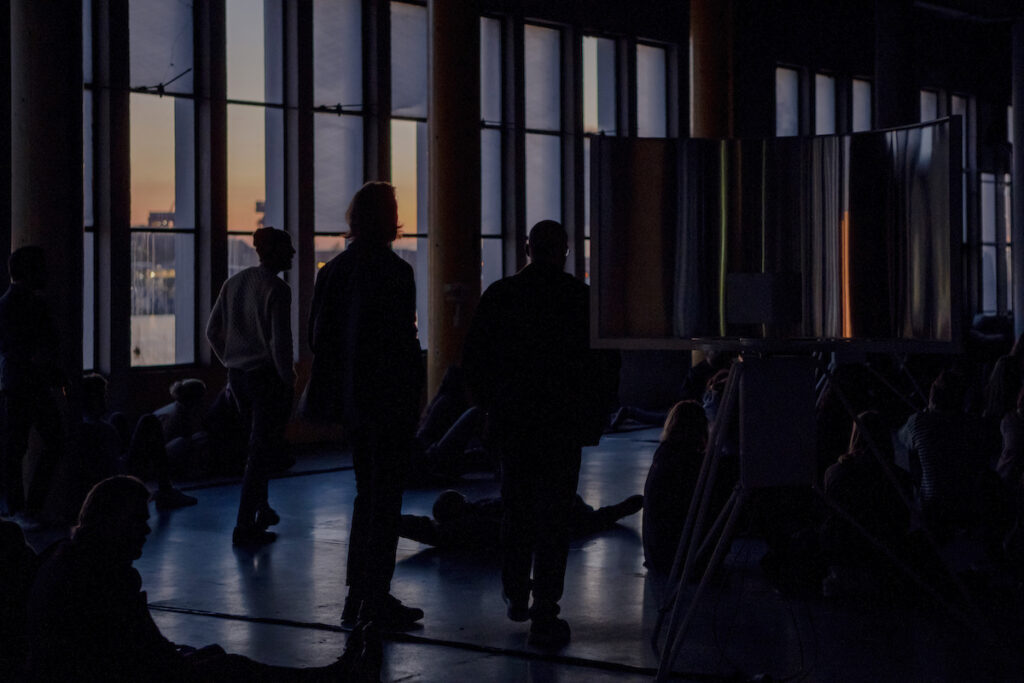
In the last few years, Jaar has seemingly distanced himself from nightclubs and exhaustive touring schedules. After an intense period of being hailed as a wunderkind of electronic music, he has scaled back his public profile. These days he rarely gives interviews, and politely steers the conversation away from his personal life. The Nicolás Jaar we meet in Zaandam is warm, talkative and generous with his time. He speaks thoughtfully, choosing his words with care.
In past interviews, he has said that the way he makes music is through improvisation. During this time at Het HEM, his work has taken a similar approach. Jaar’s sound and light installations are a culmination of the data he and the Shock Forest Group have gathered. He is keen to stress the collaborative nature of the work.
“Collaborative, not as a concept, but really from the root,” he explains.
The following day at Het HEM is a bleak, windy Saturday, with the dull winter light slowly diffusing through the building’s large windows, and creeping across its expansive concrete floor. It’s the final day of Jaar’s residency, which will later culminate with a dizzying closing party of music, sound, light and experimentation.
Taking centre stage in the main upstairs exhibition space is ‘Retaining The Energy, But Losing The Image’, a joint installation by Jaar and artist Vincent de Belleval.
Like futuristic sculptures, 10 rotating parabolas stake out their territory in the vast room. They are brilliant, shining speaker/microphone constructions that capture and emit sound and light, creating an ever-changing environment of interlinked reflections and feedback. Armed with just his laptop and Ableton, Jaar is able to trigger a spontaneous sound piece in harmony (and occasional discord) with the parabolas.
Over the course of the residency, Jaar has put on improvised performances in the space with musicians, including frequent collaborator Patrick Higgins. Tonight he is joined by Norwegian-Sámi saxophonist Mette Henriette for a final show on a grand scale, with 1,200 people piling into the room in anticipation of the performance.
The lights dim, and a bewitching spectacle unfolds before the large audience. With Jaar and de Belleval set up on an elevated area of scaffolding, Henriette walks the floor among the sea of bodies in near total darkness as Jaar live loops and manipulates the murmurs and wails of her instrument.
The crowd are completely mesmerised by Henriette. Towards the end of the hour-long improvisation, as she peels away to join Jaar, the collective attention in the room turns to the reflectors themselves. It’s at once discombobulating and euphoric, an emotive call-and-response game that seems to amplify the dramatic surroundings.
It’s also a challenging performance for those who are more accustomed to Jaar’s beat-driven DJ sets. A restlessness within the crowd flares up occasionally; people chatter, and flock to the parabolas, taking photos and selfies as if trying to make sense of what they have just witnessed.
“The world we live in now, there are so many systems and ways that condition behaviour,” says Henriette after the show. “I think for people to come and maybe expect something completely different, and then be confronted with this, it’s not easy for anyone in the room, but that’s the point also. It shouldn’t be challenging for the sake of being challenging. It’s done with a lot of love also.”
“This happens all the time, people come expecting something and there’s always half or a third that leave, always,” muses Jaar. He pauses, considering his words. “It’s happened for the past five years, it’s just really interesting.”
Is there a rift between those who still connect Jaar with his club music?
“I still make club music,” he responds. “I still make that stuff all the time. I love making club music. I’m not against it, not at all. It’s just that I play 20 shows a year, and maybe three of them are DJ sets. I stopped doing that because it felt like I was missing ways to communicate.
“I felt like I could do a lot of it through electronic dance music, but there were things that were missing. I love experimenting with Mette because we are both a bit afraid, because it can go wrong, but we both agree it’s worth doing. I love that kind of razor’s edge. You know, there’s one saxophone, in a 200-metre room, with 1,200 people, what could go fucking wrong!?”
As if proving his unshakeable bond with dance music, Jaar has dropped a new album as Against All Logic called ‘2017-2019’. It’s a club-focused record brimming with poignant samples, exciting collaborations (Lydia Lunch features on the track ‘If You Can’t Do It Good, Do It Hard’) and politicised energy. Those who are familiar with Jaar’s work will see the Het HEM residency as a natural fit for an artist whose music is intrinsically cerebral and relentlessly inquisitive.
Though he is keen to stress that he’s “not a curator”, it’s hard to believe he hasn’t had more exposure to the art world than most (Jaar’s father is the Chilean-born artist, architect and filmmaker, Alfredo Jaar).
“While I was here, I never wanted to perform without having people realise where they were actually standing,” he says. “That doesn’t sit well with me. So for me, that’s where everything originates from. This is a very particular and intense example of something that I feel every time I perform.
“You know, you walk into this place, and you don’t see the history. This violence makes some people uneasy,” he says. “To live within paradox, and live within contradiction, to me the experimental aspect is a focus on the presence of the moment, and not shying away from the difficulties in seeing both hope and despair at absolutely the same time.”
As our time with Jaar draws to a close, a quote by the late art critic Robert Hughes, famed for his book and television series on modern art ‘The Shock Of The New’, springs to mind: “The basic project of art is always to make the world whole and comprehensible, to restore it to us in all its glory and its occasional nastiness, not through argument but through feeling, and then to close the gap between you and everything that is not you, and in this way pass from feeling to meaning.”
Jaar seems buoyed by this.
“I think you could substitute ‘art’ for ‘music’ and it would make just as much sense,” he says. “I make music, but I still consider everything else I do as part of my music-making practice.”
Against All Logic’s ‘2017-2019’ and Nicolás Jaar’s ‘Cenizas’ are released on Other People.
